Yes – My first name was misspelled, but when done meticulously with flower petals, you won’t hear me complain! 🙂

And . . .
Continue reading “Happy Birthday Mr. Charleie”Yes – My first name was misspelled, but when done meticulously with flower petals, you won’t hear me complain! 🙂

And . . .
Continue reading “Happy Birthday Mr. Charleie”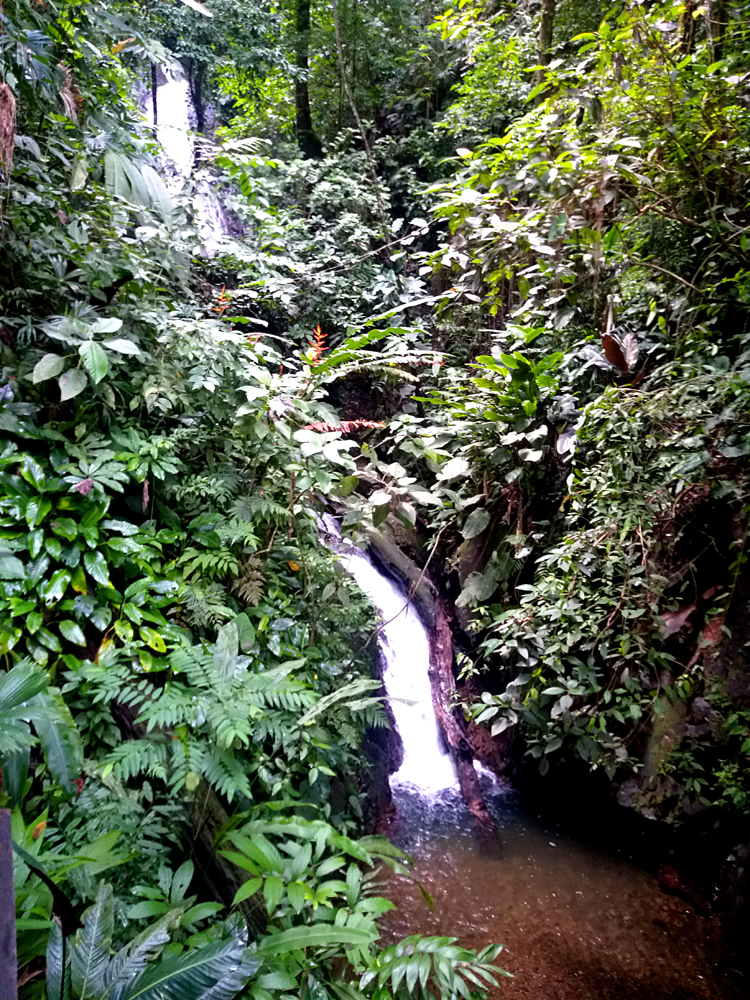
My birthday morning was sunny with lots of birds singing and the Howler Monkeys closer than they were the previous morning! 🙂 The monkeys serve as the roosters to wake you at 5 am when you’re in the rainforest. After a great breakfast I walked the half-kilometer all uphill to the waterfall closest to the lodge. It is left natural as it would be if no humans were around, thus vegetation hides part of the upper falls and a tree fell in the lower falls and they will let nature take its course, as the tree will eventually rot and be washed away, but now the only human “improvements” are the trail to get there and that could use some more improvement! 🙂 (I will include photos of the trail in my trip gallery later.)
Note that in the above photo you can partly see the upper falls while in the next two from the bottom, it is mostly hidden by vegetation.
Continue reading “Jungle waterfall”Every morning has been free of rain in the rainforest so far with the usual afternoon and evening rainy season rains that are great for sleeping at night! 🙂
This morning I had switched my planned morning hike in the mountains after learning how steep the trail is to a boat trip up Esquinas River and the Mangrove Forest for birds and maybe other wildlife. The highlight ended up being a group of about 5 Bottlenose Dolphins which are a little different from the Spotted Dolphins I’ve seen at Drake Bay and Uvita. They are “friendly” and followed our boat part of the way back to the lodge. 🙂
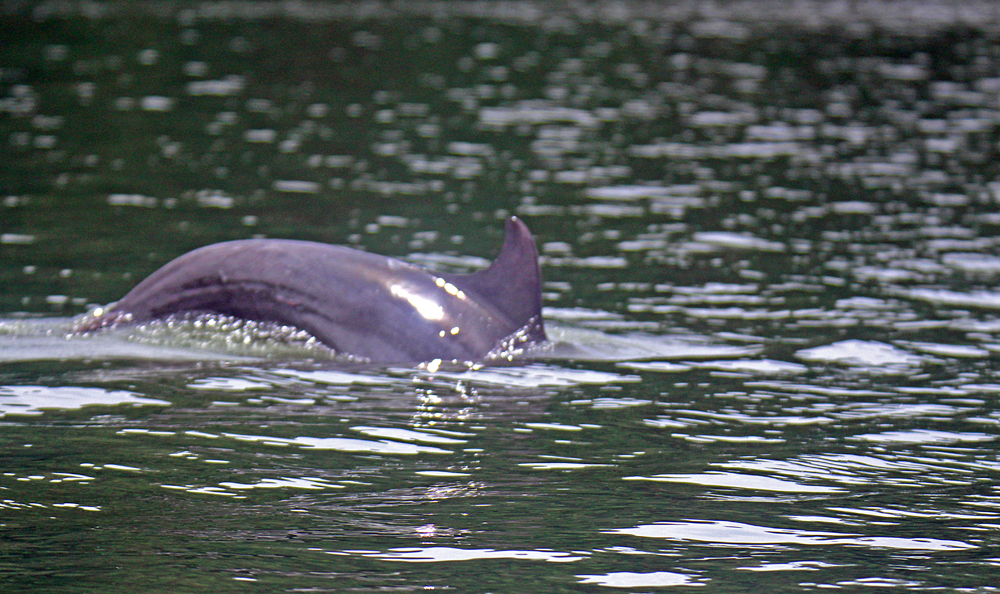
And five more shots . . .
Continue reading “Bottle-nosed Dolphin”I’ve seen this bird in only 2 other places (Maquenque Ecolodge & Corcovado National Park) and they were skittish and difficult to photograph, while here they were all around my cabin and in just 2 days I’ve had many opportunities to photograph several of them, like a big Manakin family or village! 🙂 I did not see any of them do their courtship dance, this time, the Michael Jackson moon walk shuffle across a limb, like I saw in Corcovado NP, but there were plenty in the trees to photograph.
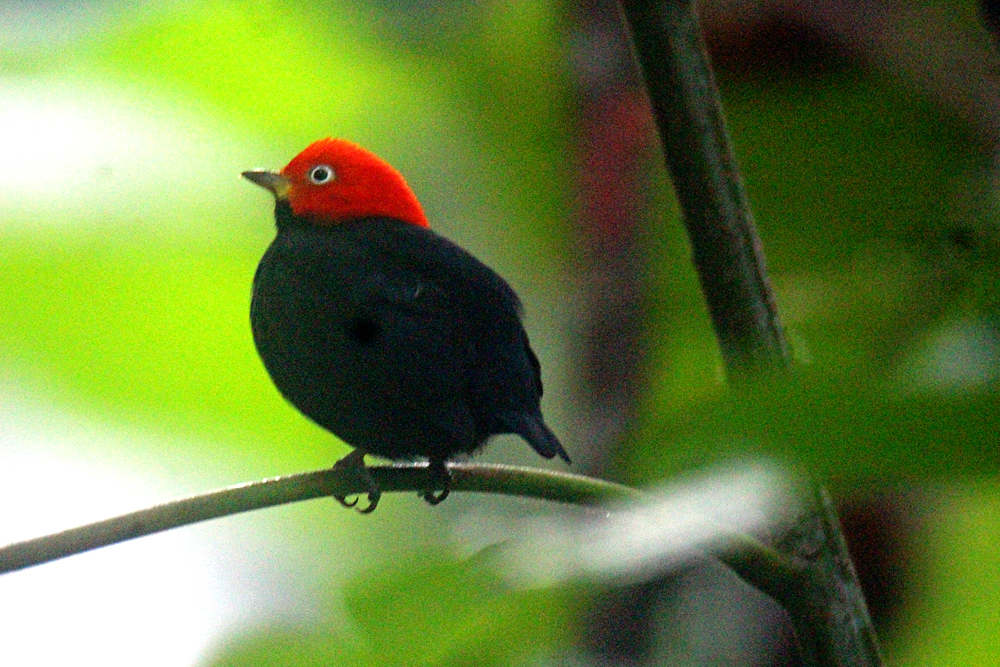
Read about the Red-capped Manakin at that eBird link or see more of my photos of them in my Red-capped Manakin Gallery. It’s another cool bird found only in Central America! 🙂 Here’s a slide show of 6 of my shots . . .
Continue reading “Red-capped Manakins”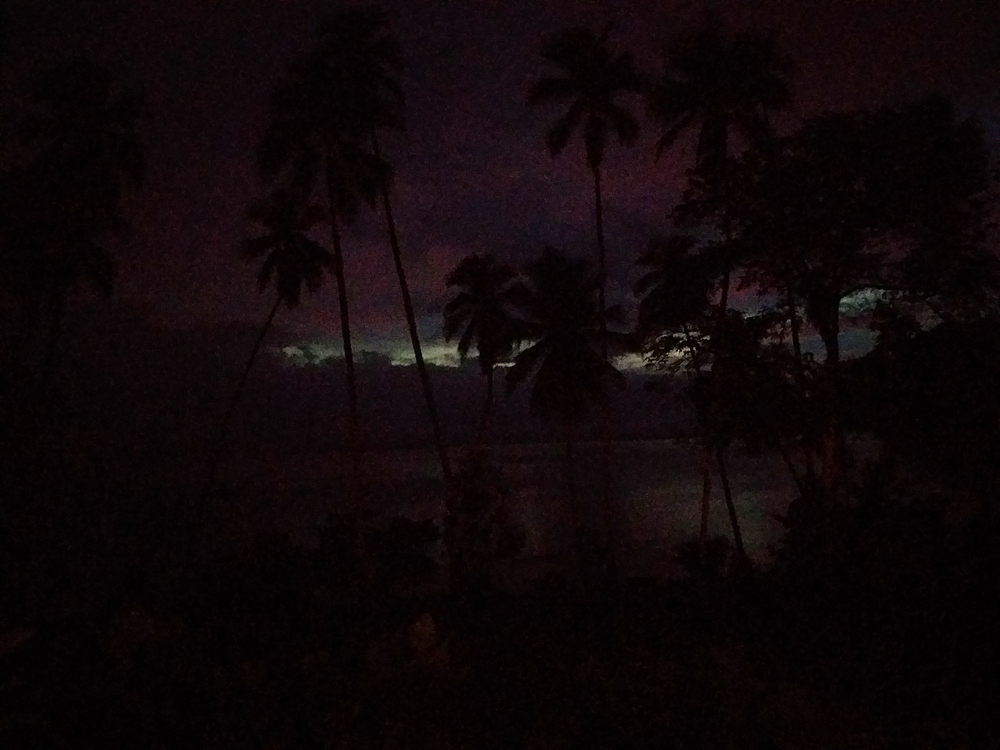
Dark, damp, misting rain with no sunset as such but a trace of color as I eat my dinner at Playa Cativo overlooking the Gulf of Dulce on the Pacific coast of southern Costa Rica, while north of us Hurricane Bonnie is rushing across northern Costa Rica and Nicaragua and the handful of us here are thankful it didn’t veer south! 🙂
I saw and did a lot the first afternoon, but too tired to curate more photos now, so this rainforest report begins with a dark sky that will surely brighten as the week goes by. If not raining, I go on my birding hike at 5:30 in the morning and I got a head start with two pretty good photos today in the low light of a Great Curassow and a Scarlet-rumped Tanager.
And Of course I already like this place! 🙂 Later I’ll tell you about my beachside cabin and share photos from this nature-rich forest.
¡Pura Vida!
My second time to see this colorful butterfly was almost two weeks ago (yeah, I’m writing posts way ahead again, but will do it live daily on my trip in July). It was after breakfast, walking in my garden, when I found him. The Guava Skipper, Phocides polybius (Wikipedia link) is found from South Texas through Mexico and all of Central America down to Argentina. My only other time to see one was at Xandari Resort Alajuela for my birthday in 2019. Those photos plus these here can be seen in my Guava Skipper Gallery.
The one at Xandari was bluer than this one which is darker or close to black. And it is interesting that most of my butterfly photos at home show them on a Porterweed flower even though I have many other flowers. An obvious preference for butterflies and hummingbirds! 🙂 And by the way, they are called “Guava” because they lay their eggs on a Guava Plant, which is somewhere between a shrub and a small tropical tree. 🙂
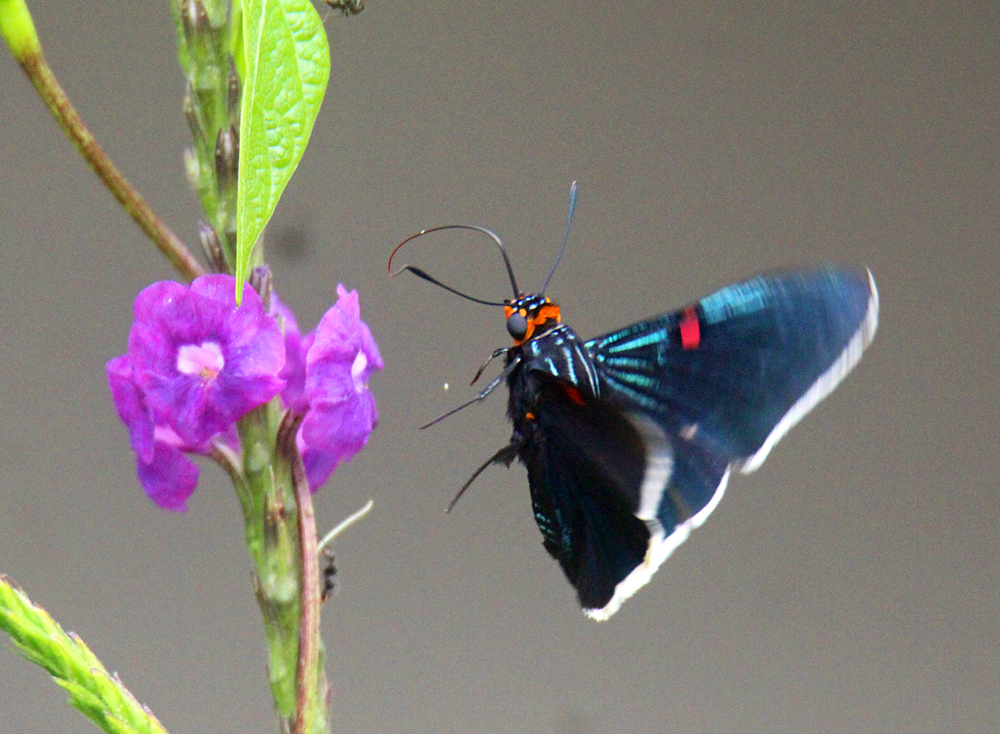
Now here’s six shots in a slideshow for a change . . .
Continue reading “Guava Skipper”I can’t seem to quit photographing the clouds on the hills opposite my terrace! 🙂 See many other better vistas from my terrace in my gallery titled: From My Roca Verde Terrace! The vistas from my terrace are just one of the many blessings I have from my decision to color my sunset years “Retired in Costa Rica.” The two shown here were made on different days, June 2 & 15, one zoomed in on the distant clouds with my Tamron zoom lens and the second one with my cell phone camera. 🙂
Go to the top of my GALLERY and browse through many topics including especially my TRIPS galleries (my favorites) to see many more reasons I enjoy Costa Rica beyond the vistas!
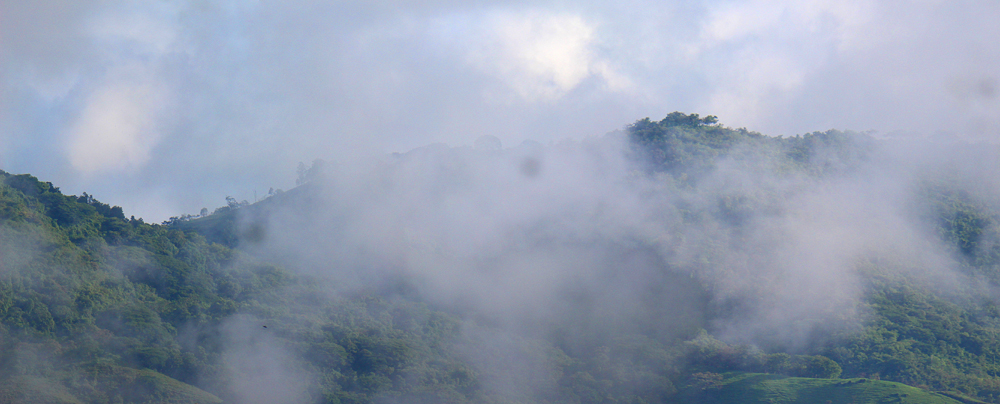
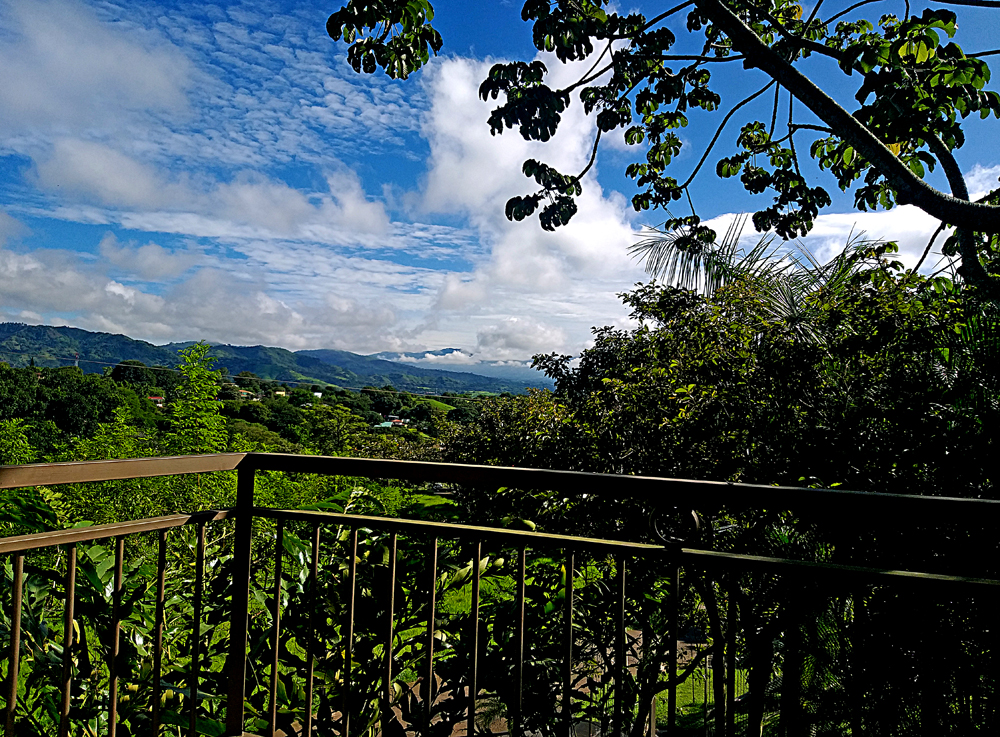
“Clouds come floating into my life, no longer to carry rain or usher storm, but to add color to my sunset sky.”
~Rabindranath Tagore
¡Pura Vida!
I’ve already done so many posts with photos from Chachagua Rainforest that I decided to lump these miscellaneous “other wildlife” together, especially since most are not great quality photos. Note that I saw Agoutis and Coatis but they were shyer of people there and thus no photos. Below is a gallery of 10 photos of 9 different animals with 2 shots of the fish with front-end and back-end in different shots! 🙂 So those receiving email notice will start with at least one photo, here’s an unusual spider you might like . . .
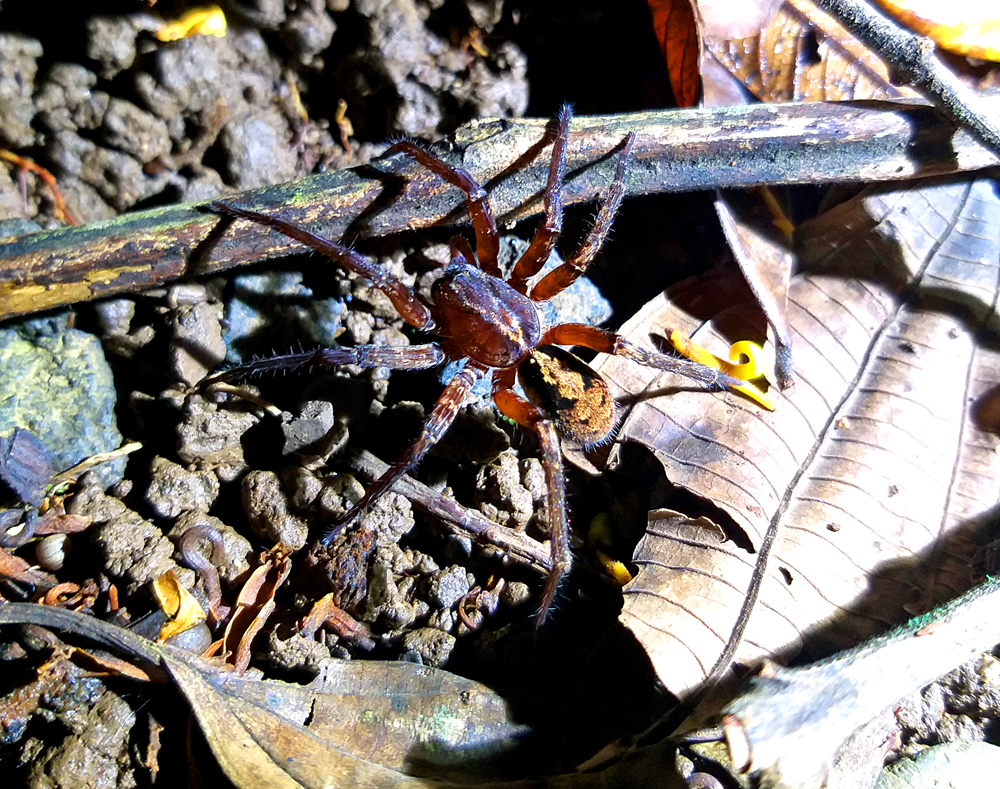
Everyone prefers the Emerald Basilisk, sometimes called Green Basilisk, but the Brown Basilisk is seen just about as much even with his better camouflage. 🙂 In these photos, the Emerald is an adult male with the head crest while the brown without a crest could be either a juvenile or a female. Both are found all over Costa Rica, especially near water. Note that both have a tail longer than the body. And both are sometimes called “Jesus Christ Lizards” because they walk on water (or run).
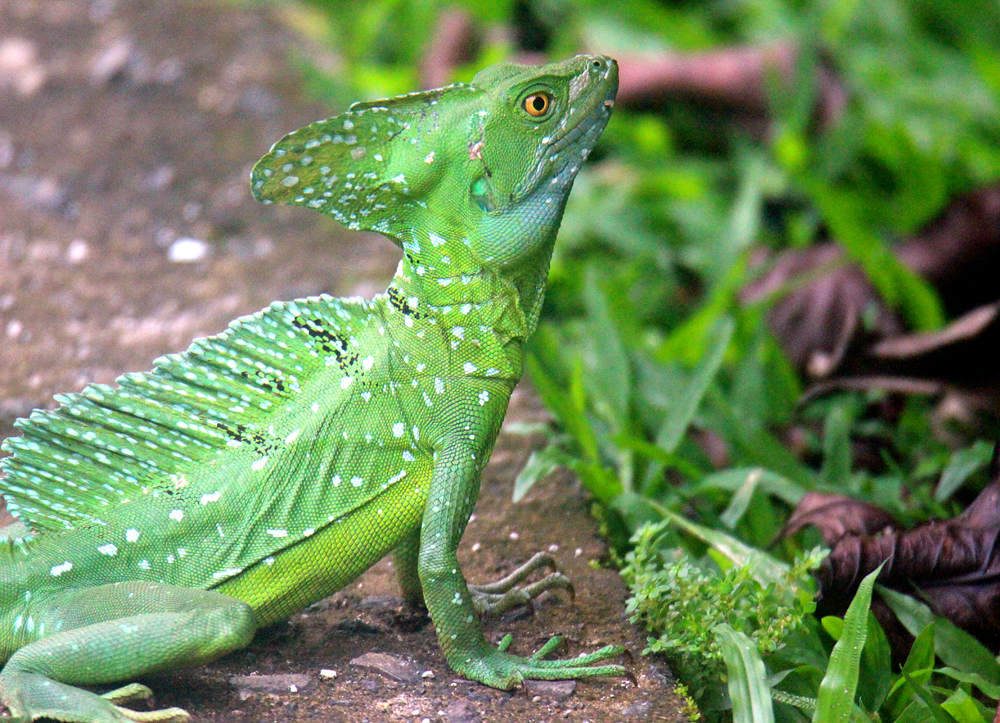
This Brown-throated Three-toed Sloth (Wikipedia link) was in this Guarumo or Cecropia Tree long enough for multiple efforts to photograph it, though in the shadows or no good light, at Chachagua Rainforest Hotel grounds. A peaceful creature! 🙂 In a peaceful place! 🙂

Continue reading ““Upside-down Yogi” (Sloth)”“The three-toed sloth lives a peaceful, vegetarian life in perfect harmony with its environment. A good-natured smile is forever on its lips…I have seen that smile with my own eyes. I am not one given to projecting human traits and emotions onto animals, but many a time during that month in Brazil, looking up at a sloth in repose, I felt I was in the presence of upside-down yogis deep in meditation or hermits deep in prayer, wise beings whose intense imaginative lives were beyond the reach of scientific probing.”
― Yann Martel, Life of Pi